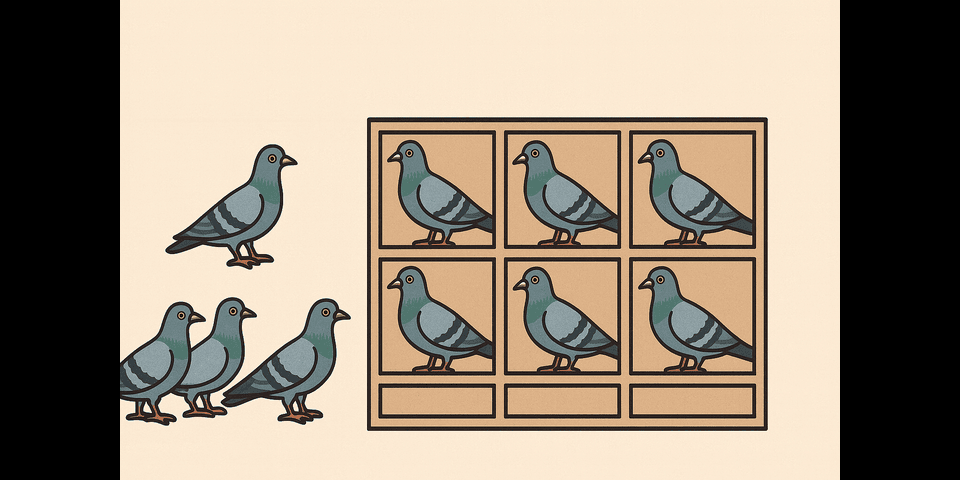
The Pigeonhole Principle
Introduction
Have you ever wondered how something as simple as fitting pigeons into pigeonholes can lead to profound mathematical insights?
The Pigeonhole Principle might seem straightforward at first glance, but its applications can be surprisingly deep and far-reaching.
In this post, we’ll explore what the pigeonhole principle is, delve into fascinating examples, and see how this principle helps solve complex problems in mathematics.
What Is the Pigeonhole Principle?
The pigeonhole principle is a simple yet powerful concept in combinatorics.
It states that if you have more pigeons than pigeonholes, at least one pigeonhole must contain more than one pigeon.
Formally, if
Simple Examples to Illustrate the Principle
Socks in a Drawer
Imagine you have 10 pairs of socks, each pair a different color, mixed together in a drawer.
If you pull out 11 individual socks, at least one pair of socks will match.
This happens because you have more socks (11) than the number of colors (10), guaranteeing a match.
Birthdays in a Group
Consider a group of 13 people. According to the pigeonhole principle, at least two people will share a birth month.
There are only 12 months in the year, so having 13 people ensures that one month must accommodate at least two birthdays.
A More Complex Example
This insightful approach is discussed in The Art and Craft of Problem Solving by Paul Zeitz.
Solving most pigeonhole problems involves a few key steps:
- Recognize that the problem might require the pigeonhole principle.
- Identify what the pigeons and holes represent — this is often the crux of the problem.
- Understand that applying the principle may not directly finish the problem — sometimes it only gives a key intermediate result.
The best problem solvers know when and how to use this reasoning.
Problem
Show that among any
positive integers, there must be two whose difference is a multiple of .
Solution
-
Consider the
positive integers: -
Compute the remainders of these integers when divided by
.
Let the remainders be:where each remainder satisfies
. -
Since there are
remainders but only possible values (from to ), by the pigeonhole principle, at least two of these remainders must be the same. -
Let these integers be
and with the same remainder .
Therefore, -
This implies that
for some integer
.
Hence, we’ve shown that among any
Conclusion
The pigeonhole principle may sound simple, but its power lies in its universality.
From probability puzzles to number theory and beyond, it appears in countless mathematical contexts — often as the hidden insight that unlocks a problem’s structure.
Next time you face a tricky problem, remember: sometimes it’s just about finding the right “pigeonholes.”